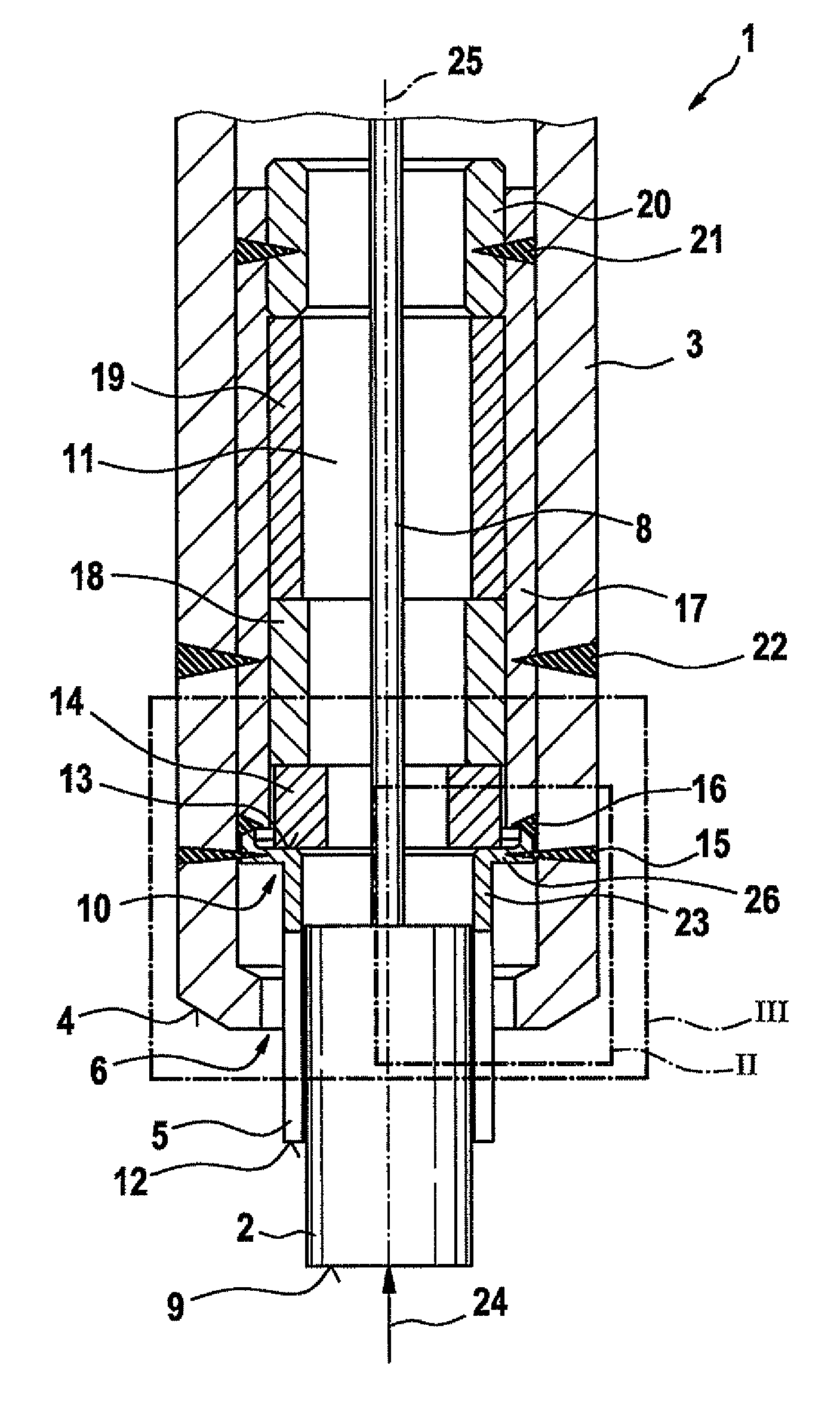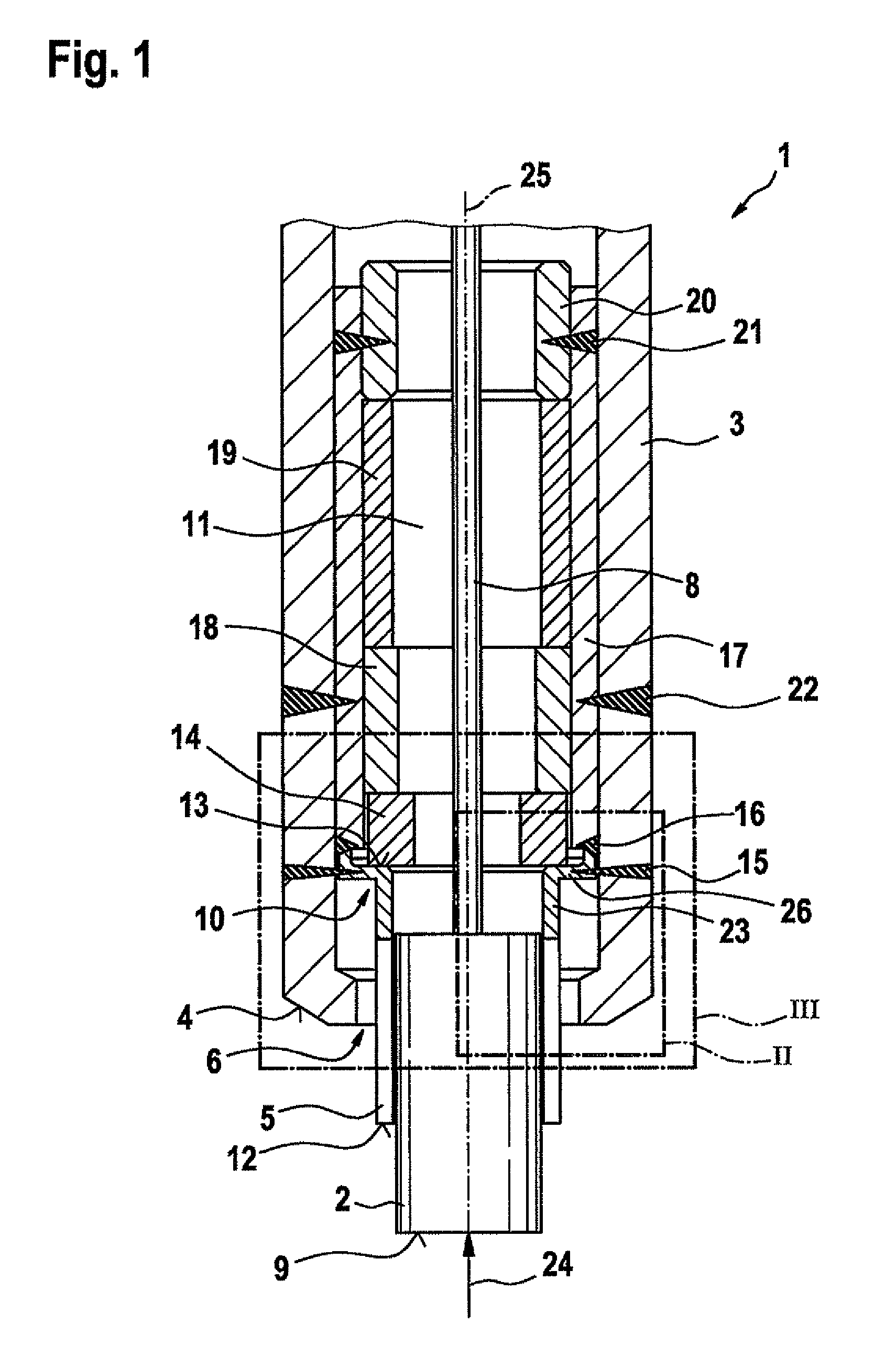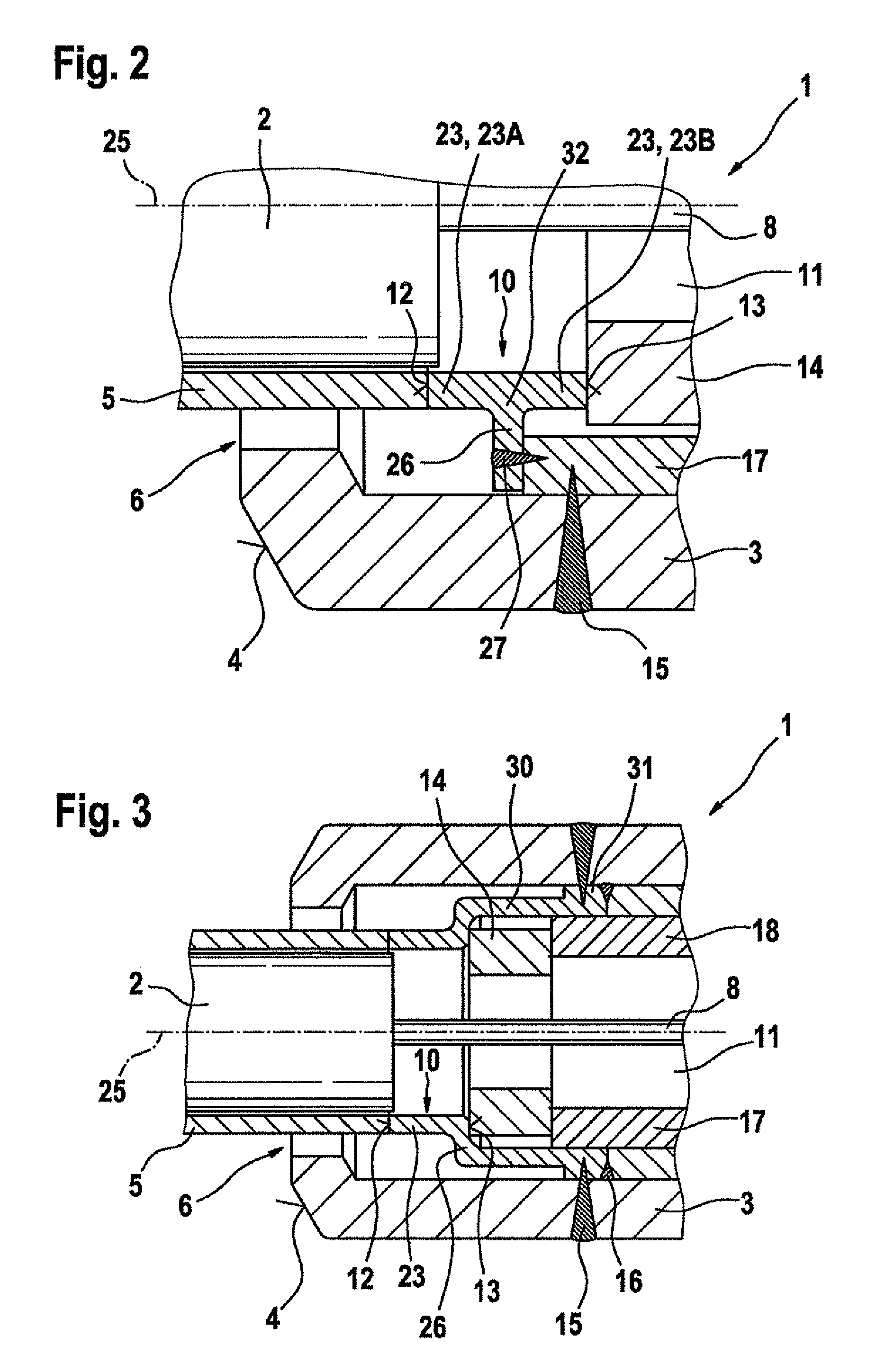Pressure-measuring device
a technology of pressure measurement and pressure gauge, which is applied in the direction of fluid pressure measurement using elastically deformable gauges, rapid change measurement, instruments, etc., can solve the problems of diaphragm thermal shock sensitivity, distortion of output pressure signal, and impaired pressure measuremen
- Summary
- Abstract
- Description
- Claims
- Application Information
AI Technical Summary
Benefits of technology
Problems solved by technology
Method used
Image
Examples
Embodiment Construction
[0018]FIG. 1 shows a first exemplary embodiment of a pressure-measuring device 1, in a schematic, axial sectional representation. Pressure-measuring device 1 is realized as pressure-measuring glow plug 1 for an air-compressing, self-igniting internal combustion engine. In pre-chamber and turbulence chamber engines, a rod-shaped heating element 2 of pressure-measuring glow plug 1 protrudes into the chamber of the internal combustion engine, and in engines having direct injection said heating element protrudes into a combustion chamber of the engine. However, pressure-measuring glow plug 1 according to the present invention is also suitable for other cases of application. In addition, pressure-measuring device 1 can also be realized as a pressure-measuring spark plug or as a pressure-measuring injection valve for mixture-compressing, externally ignited internal combustion engines.
[0019]Pressure-measuring glow plug 1 has a housing 3 that has a sealing cone 4. Rod-shaped heating element...
PUM
| Property | Measurement | Unit |
|---|---|---|
| thickness | aaaaa | aaaaa |
| pressure | aaaaa | aaaaa |
| spring elasticity | aaaaa | aaaaa |
Abstract
Description
Claims
Application Information
 Login to View More
Login to View More - R&D
- Intellectual Property
- Life Sciences
- Materials
- Tech Scout
- Unparalleled Data Quality
- Higher Quality Content
- 60% Fewer Hallucinations
Browse by: Latest US Patents, China's latest patents, Technical Efficacy Thesaurus, Application Domain, Technology Topic, Popular Technical Reports.
© 2025 PatSnap. All rights reserved.Legal|Privacy policy|Modern Slavery Act Transparency Statement|Sitemap|About US| Contact US: help@patsnap.com



